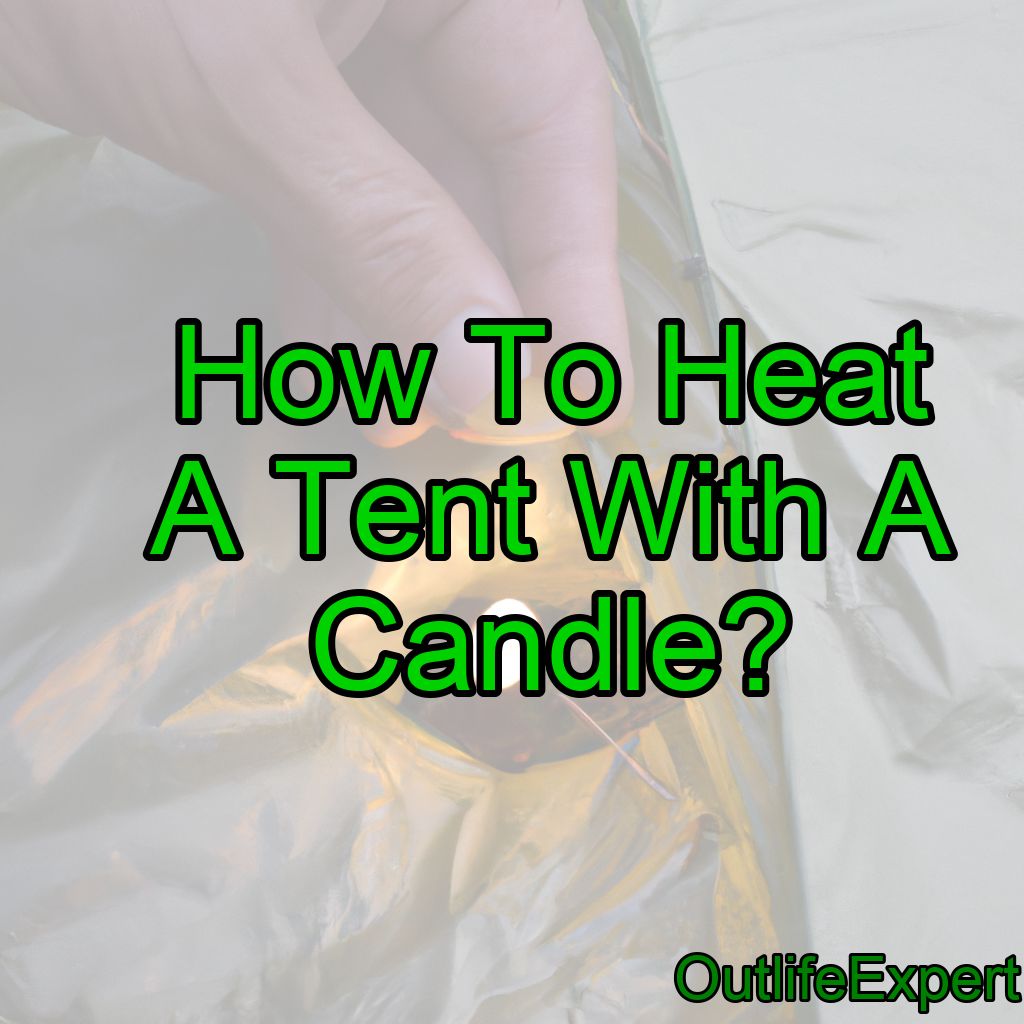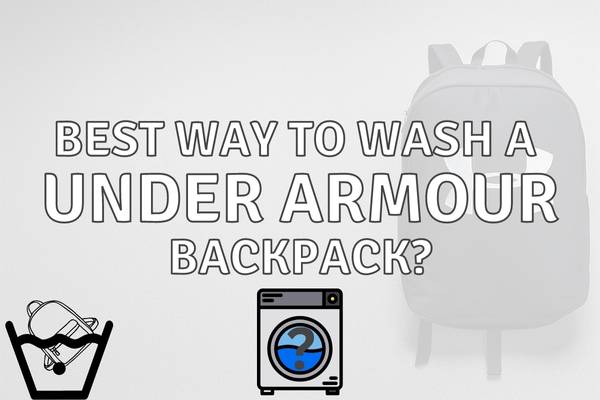Are you looking for a way to stay warm in the great outdoors? If so, then it’s time to learn how to heat up your tent with a candle!
For many of us, there’s nothing quite like stepping away from our routine lives and heading into nature – but sometimes the weather can put a damper on things! Don’t let chilly temperatures get in the way of your fun; instead use this quick and easy trick to turn any tent into an oasis of warmth and comfort.
Heating a tent with a candle can be done safely by following these steps:
1. Choose the right candle: Opt for a larger, long-burning candle made of beeswax or soy wax, as they produce more heat and burn longer than paraffin candles. Avoid scented candles as they may produce harmful fumes in an enclosed space.
2. Use a candle lantern: A candle lantern is a protective casing that holds the candle and helps to distribute heat more evenly. It also reduces the risk of fire by keeping the flame contained.
3. Ventilation: Ensure your tent has proper ventilation to prevent the build-up of carbon monoxide and reduce condensation. Keep a small opening in the tent for fresh air circulation.
4. Position the candle: Place the candle lantern on a stable, non-flammable surface away from the tent walls and any flammable materials. Hanging the lantern from the tent’s central loop can help distribute heat more evenly.
5. Insulate your tent: Use a groundsheet, sleeping pad, and blankets to insulate the tent floor. This will help retain heat and keep you warmer.
6. Monitor the candle: Never leave the candle unattended and extinguish it before going to sleep or leaving the tent. Keep a fire extinguisher or a bucket of water nearby in case of emergencies.
Remember, a candle will only provide a minimal amount of heat and is not a substitute for a proper heating source in extremely cold conditions. Always prioritize safety and consider alternative heating methods if necessary.
This simple, cost-effective technique is perfect for campers and hikers who want to enjoy their camping experience without having to worry about cold nights. With just one or two candles, you can create an inviting environment that will keep everyone cozy and comfortable no matter what the temperature outside may be.
Read on to find out more about this unique heating method and how it can help make your outdoor adventures extra special.
You’ll soon see why using candles as a source of heat while camping has become so popular among adventurers everywhere.
Safety Considerations
When it comes to heating a tent with a candle, safety should be your number one priority. It is essential that you ensure proper ventilation in the tent and use fire containment techniques like using fire guards or flame control devices.
If you don’t have these items available, then you’ll need to exercise extreme caution when lighting the candle. Heat regulation is also important; make sure not to place the candle too close to combustible materials such as curtains or clothing.
By following these precautions, you can reduce any risk of injury or property damage caused by an unexpected fire outbreak.
Now that we’ve discussed the importance of safety, let’s look into what supplies are required for this task!
Supplies Required
Now that safety considerations have been taken into account, let’s take a look at the necessary supplies for heating your tent with a candle.
For example, you will need to bring fireproofing materials such as sand or rock in order to create a safe platform and proper ventilation options. Additionally, there are several heat retention tips to keep in mind when using candles:
- Select an appropriate type of candle; try avoiding paraffin wax due to its high smoke content and choose instead beeswax or soy wax candles.
- Make sure to place the candle on an elevated surface so it doesn’t get too close to any flammable surfaces inside the tent.
- Ensure adequate airflow by properly setting up ventilation points while ensuring they don’t allow cold air from outside the tent to enter.
- When leaving your tent, always remember to blow out all flames before exiting.
- Follow manufacturer instructions for proper usage of specific types of candles.
By taking these precautions during setup and following fire safety protocols throughout use, you can safely enjoy some extra warmth provided by a candle in your tent without putting yourself or anyone else at risk!
Next we’ll take a look at how best set things up for optimal comfort levels and heat distribution within the tent space.
Setting Up candle heating in your tent
When it comes to setting up, knowing your shelter choice is key. If you’re interested in heating a tent with a candle, then the type of tent matters. Choose one that has plenty of ventilation and won’t catch fire easily.
You also want to make sure you pick the right spot for your campsite – away from any windy areas. This will help keep the temperature inside nice and warm, making your candle heat more effective.
Location selection is important for another reason too: safety! Once you have found a good spot, set up your tent according to manufacturer instructions and place the candle safely on the ground or in a holder near an open vent or window. Make sure there are no flammable items nearby that could be ignited by sparks from the flame!
With proper setup and location selection, you can enjoy cozy warmth during chilly nights out camping without having to worry about running out of fuel or dealing with other temperature control issues.
Maintenance And Clean Up
Ah, the romance of candlelight in a tent! The perfect way to keep your campsite warm and cozy all winter long. But don’t let the dreamy visuals fool you—candle heating requires some serious maintenance and clean-up know-how if you want to stay safe from fire hazards.
For starters, proper ventilation is key when using candles as heat sources; make sure there are no fuel sources nearby that could catch on fire, and never leave a flame unattended while camping outdoors.
Additionally, having access to an adequate supply of water or sand can help contain any accidental fires caused by improper use of your heat source.
Finally, it’s always good practice to have a fire safety plan in place before embarking on any outdoor adventure with open flames.
This isn’t meant to scare anyone away from enjoying their time spent in nature; just bear these tips in mind when planning out your next trip so that everyone stays safe while they get their dose of fresh air this season!
Frequently Asked Questions
How Much Heat Does A Candle Provide?
When it comes to heating a tent with a candle, one of the first questions that come up is: how much heat does a candle provide?
As an outdoor expert, I can tell you that this will depend largely on the type and size of your candle. For example, small tea lights may not give off as much warmth compared with larger votive or pillar candles. Additionally, wax selection plays a role in generating heat – beeswax has more thermal potential than paraffin-based varieties – while proper ventilation tips and flame control techniques are also key components when considering fire safety.
Finally, consider where you place your candles within the tent; placing them near air vents or draped fabrics can help spread their warmth throughout the space.
Are There Any Alternatives To Using A Candle To Heat A Tent?
You don’t always need a candle to heat up your tent; there are alternative sources of warmth you can use.
As an outdoor expert, I recommend considering things like fuel storage, ventilation requirements and fire prevention when looking for alternatives to heating with candles.
If you’re worried about carbon monoxide poisoning from burning the wrong type of fuels inside your tent, why not break free from that worry and look into other options?
There’s no single right answer here – just make sure whatever method you choose doesn’t put yourself or others at risk!
Is It Possible To Burn A Candle Overnight In A Tent?
Burning a candle overnight in a tent can be done, but it’s important to consider the safety risks and understand proper flame control.
Before setting up fire pits or burning candles for warmth while winter camping, make sure you have good ventilation and take all necessary precautions with your gear.
Using cold weather camping gear like sleeping bags rated for lower temperatures makes it easier to stay warm without having to rely on open flames.
However, if you do decide to burn a candle overnight, pay attention to flame control and follow best practices when it comes to candle safety.
How Can I Keep The Candle Flame From Going Out?
As an outdoor expert, I can tell you that proper ventilation and candle placement are key for fire safety when it comes to keeping a flame from going out.
Heat sources need ample air circulation, so make sure your tent is well ventilated before attempting this.
In addition, ensure the wick of the candle isn’t too long or too close to other objects in the tent by placing it at least one foot away on a level surface.
As much as we all yearn for freedom while camping outdoors, remember that following these steps will help keep you safe and warm throughout your experience – without any risk of putting yourself in danger!
Is It Safe To Use A Candle In A Tent With Small Children Present?
Using a candle to heat a tent is not recommended when small children are present due to the risk of fire and smoke inhalation, as well as flame control.
As an outdoor expert, I suggest other safer methods for heating your tent such as battery powered heaters or warm clothing layers.
However, if you choose to use a candle, make sure there’s plenty of ventilation in the space to ensure safety from any potential hazards that could arise from improper flame protection or excessive heat sources.
Conclusion
A candle is an effective source of heat for a tent, but it should be used with caution. With the right setup and precautions, you can enjoy a comfortable night’s sleep in even the coldest conditions.
The flickering flame has been providing warmth for campers since before anyone could remember – just think about all those stories your grandparents told around the fire!
But as inviting as that warm glow may be, I always stress to my readers that safety comes first when using open flames inside a tent. Always double check your equipment to make sure there aren’t any loose fabrics or materials near the flame; never leave children unattended while burning candles; and if at all possible, find an alternative way of heating your tent such as carrying chemical handwarmers.
Remember: camping isn’t just about staying cozy and having fun – it’s also about making smart decisions so everyone can get back home safely!




